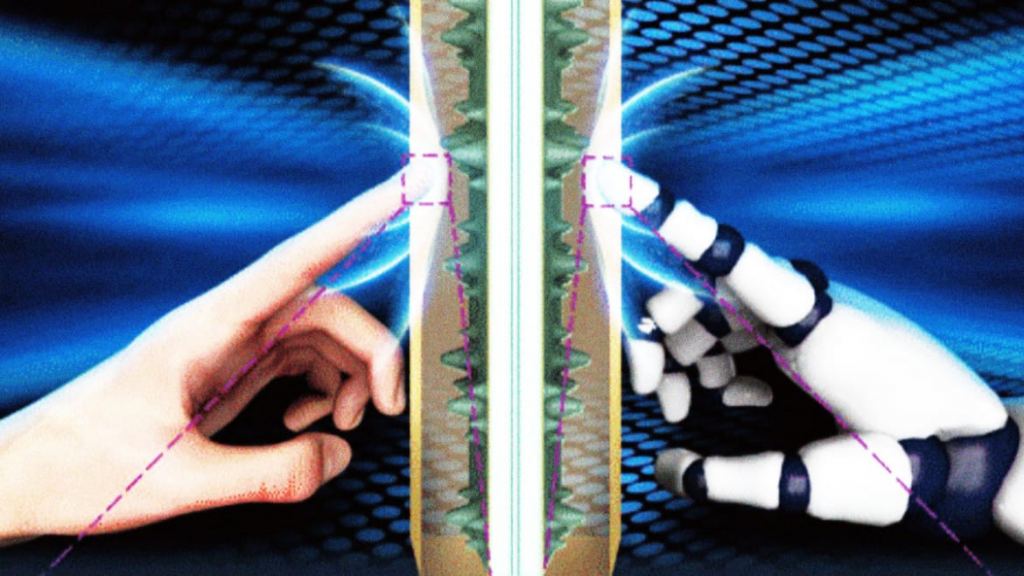MRIs and X-rays are a few of the medical imaging methods that can be used to see what is happening beneath our skin. To explore the human form more deeply, scientists at Wuyi University in China have now created a robotic finger that can be prodded and poked. Their bionic finger can locate structures beneath human skin, such as blood vessels, tissues, and bones.
“We were inspired by human fingers, which have the most sensitive tactile perception that we know of,” said senior author Jianyi Luo, a professor at the university.
“For example, when we touch our bodies with our fingers, we can sense not only the texture of our skin but also the outline of the bone beneath it.”

The bionic finger resembles a tattoo gun rather than a finger. It operates by jabbing a surface repeatedly with a little needle-like tip while it scans back and forth across the region. The tip comprises carbon fibers, which compress to varying degrees as they come into contact with softer and more complex surfaces.
The bionic finger can thus build three-dimensional photographs of what it touches based on its contraction as well as the reaction of the material it comes into contact with. This way, the material’s surface is scanned, and the structures beneath are converted into 3D.
“Our bionic finger goes beyond previous artificial sensors that were only capable of recognizing and discriminating between external shapes, surface textures, and hardness,” said study co-author Zhiming Chen, a lecturer at Wuyi University.

To evaluate how the bionic finger may map humans, the study team developed constructions comprised of artificial bones and “muscle” tissue fabricated from silicone. They discovered that the probe’s touch was sensitive enough to detect synthetic blood veins embedded in the artificial tissue.
“Similar to the palpation of a doctor, the bionic finger can recognize the simple tissue structures of the human body, but some work remains to be done to recognize complex 3D structures,” the researchers stated.
“Significantly, the bionic finger can reconstruct the 3D profile of the tissue structures, making the palpation visual and scientific. Overall, these results show the fantastic prospects for subsurface tactile tomography for application in the human body.”

According to the researchers, the bionic finger device could also be beneficial in detecting flaws in flexible electronics such as sweat-powered wearable batteries and stretchable display panels.
“This tactile technology opens up a non-optical way for the nondestructive testing of the human body and flexible electronics,” says Luo. “Next, we want to develop the bionic finger’s capacity for omnidirectional detection with different surface materials.”
The research was reported in the journal Cell Reports Physical Science.
Source: EurekAlert


